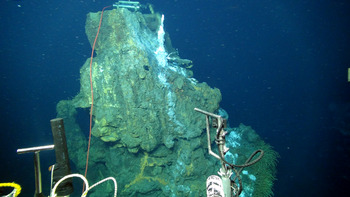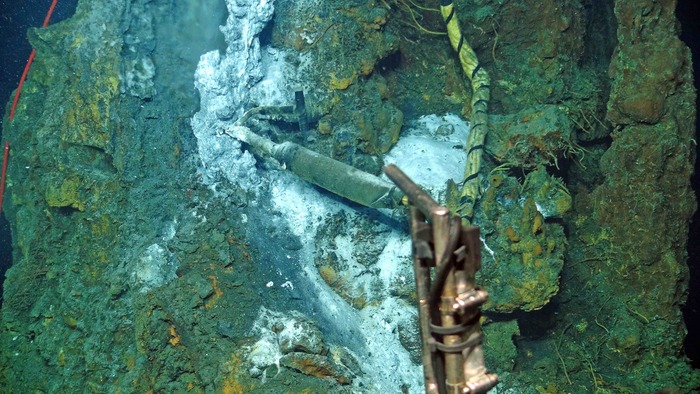
A temperature-resistivity sensor, with its wand now embedded in a sulfate-rich chimney (white, right) sends real-time data to shore from the Escargot chimney, 5000 ft beneath the oceans' surface and >300 miles offshore. Resistivity is an analogue for fluid chlorinity. Numerous hydrothermal vents in the International District Hydrothermal Field at the summit of Axial Seamount are boiling. Credit. UW/OOI-NSF/WHOI; Dive J2-912, V16.
Known as the "Res Probe," this novel seafloor instrument is designed to go inside the "throats" of high-temperature (>400°C) black smoker chimneys to measure the resistivity and temperature of the hydrothermal vent fluids. Resistivity is an analogue for chlorinity, measuring the "saltiness" of the vent fluids. Some structures at Axial Seamount emit boiling fluids, as reflected by their high temperature and low chlorinity.
The Res Probe was developed by Dr. Marv Lilley at the University of Washington. The cabled version of the Res Probe has been installed since 2014 at the Escargot sulfide structure as part of the International District Hydrothermal Field (MJ03C), Axial Seamount instrumentation. In 2014, UW student Gina Hanson produced a video "Boiing Fluids On the Seafloor" about this instrument that can be accessed here.


